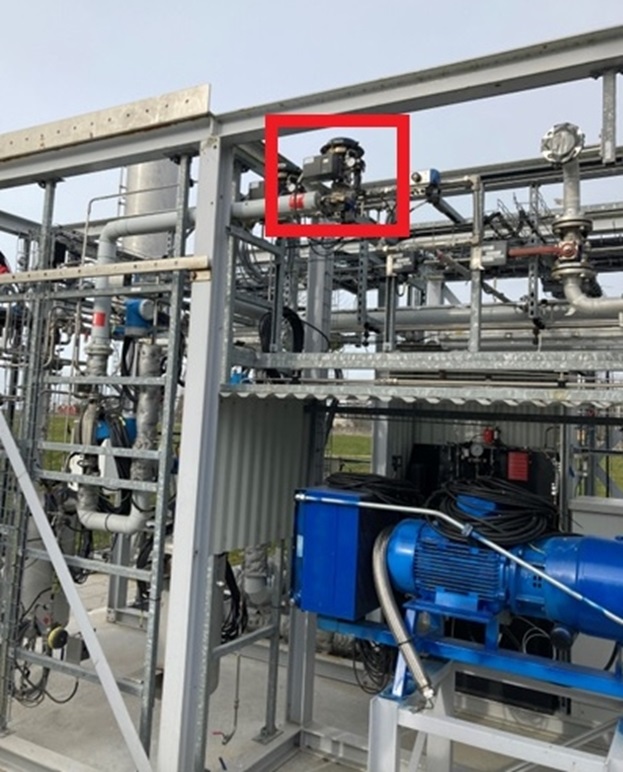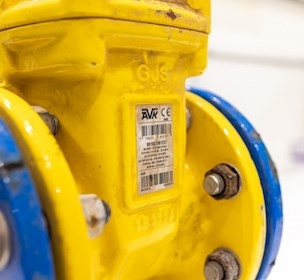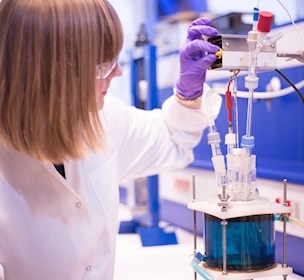Electrochaea.dk designed and built a Power-to-Gas facility with help from FORCE Technology
How to choose the most optimal materials for a pilot methane facility, and why do some parts not work as intended? The answers hold the keys for Electrochaea.dk to make demands on its suppliers.
Electrochaea.dk ApS has been around since the start of the green transition, establishing Power-to-Gas facilities in multiple locations around the world. Their projects also include a 1 MWe pilot plant in Avedøre Holme, Hvidovre, Denmark.
Small hydrogen molecules with bigger safety requirements
Eletrochaea.dk transforms power from sustainable energy sources into hydrogen via electrolysis. By combining it with CO2 from bio-gas facilities, they produce renewable methane. They are able to direct the methane directly into the gas pipeline network, where it can be used as fuel or for heating.
At a certain point of operating the pilot plant in Avedøre, they discovered that the methane output for the production process did not correspond to the system's CO2 and hydrogen inputs.
"We saw that less methane was coming out of the reactor than we calculated, so we started hunting for the reason all over the facility. We discovered that the system was losing hydrogen through one of its valves," explains Hans Wendelboe, an Operations Technician for Electrochaea.dk ApS.
Because safety is all-important when working with hydrogen, actions were taken immediately to identify what the reason was.
Challenges caused by electrolysis-derived hydrogen purity
After a thorough investigation of the metal and polymer components in the valve, FORCE Technology determined that a gasket was leaking. Because hydrogen molecules are small and escape easily, standard gaskets are often not sufficient to contain hydrogen.
"It's a good experience for us as a business, determining which materials and components to choose for our system to last its expected lifetime," says Wendelboe. "The learnings provide good guidance for our product development"
There was also a clear difference between the flow valve used in the hydrogen stream and the same flow valve used in the CO2 stream. The stem of the hydrogen valve had calcium deposits on it from the electrolysis process, posing a risk of contamination further along in the process. So, we came to a very important conclusion that a lack of post-electrolysis filtration can contaminate the system, destroying components and significantly reducing the facility's lifetime.
Optimising facility costs through material choices
In the course of its multi-year collaboration with FORCE Technology, Electrochaea.dk has also received assistance choosing metallic materials for its pilot systems.
Because the company works with hydrogen, safety is a top priority, and the expectation was that only the best metallic materials would be used. However, it turned out that the most expensive solution possible was not necessary to keep safety under control.
"When we were designing and building the system, we needed to figure out which materials to use so that the system would be safe to operate. We had various kinds of steel tested at FORCE Technology, and it turned out that the most expensive kind may not be necessary," says Wendelboe.
A front-runner in safety and standards
Power-to-Gas and Power-to-X are still new technologies that sometimes lack common standards and guidelines. This can make it difficult for manufacturers to get the right answers when developing and building a system. Similarly, it can be challenging to provide requirements to suppliers without having the necessary documentation.
"When we started building the pilot plant in 2015, we faced loads of situations that nobody had faced before. That´s why we really appreciated FORCE Technology's expertise concerning safety and standards in the Power-to-Gas area. They helped us to identify different solutions to avoid issues in handling hydrogen. Someone has to lead the charge, after all, and we are happy that Electrochaea had such a strong partner on this way" Wendelboe concludes







